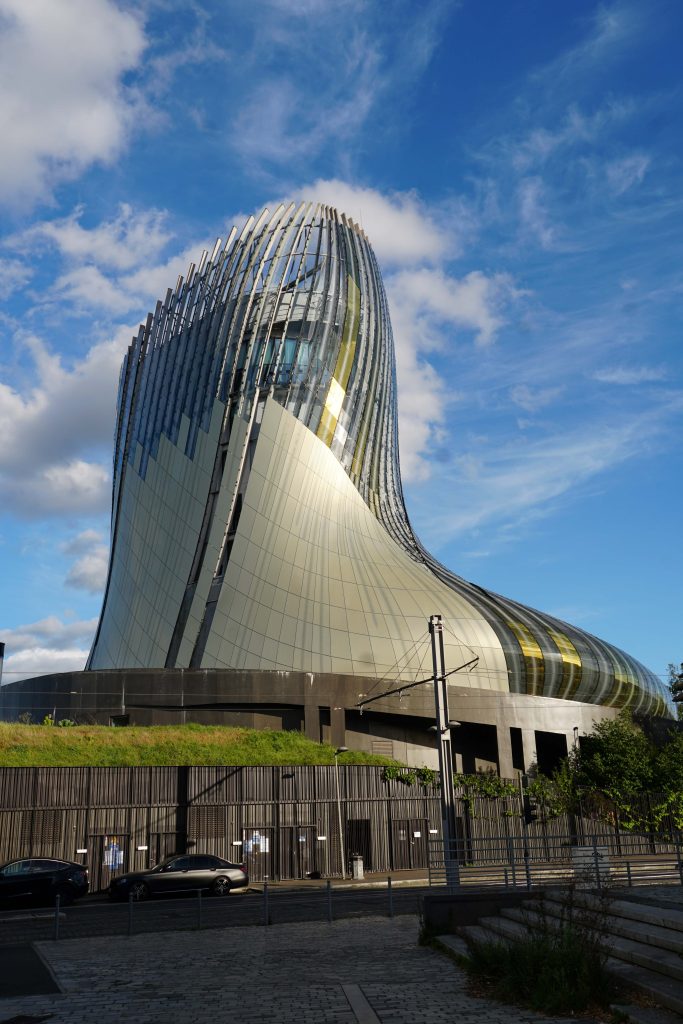Bordeaux is known as the world capital of wine, a UNESCO World heritage Site and therefore a major tourist destination. It has a rich history going back to 300BC. Geographically, Bordeaux is near the Atlantic coast, 500km southwest of Paris, and built on a bend of the River Garonne.
Geoffrey and I are not wine buffs but we’ve always wanted to visit as we’re heard so much about the region. After a few days there we can now see why it is so popular and why people love coming back.
We stayed at the Renaissance – just a few tram stops away from the centre of town but just across the road from the stunning Cité du Vin – an ultra modern wine museum that was opened in 2017 and has proven extremely popular with its permanent exhibitions, interactive experiences, wine tasting workshops, restaurants, and wine displays.
The old town centre is a great experience – largely traffic free and serviced by an efficient tram network. Even if you’ve already seen enough stunning architecture on your holiday you’ll still be blown away by what Bordeaux has to offer – the Cathedral, Grosse Cloche and Place de la Bourse, the Grand Theatre some of the major attractions .
We especially enjoyed the eating options and the shopping in the Old Town. Rue Sainte-Catherine, is the longest 1.2km pedestrian shopping street in France, with the surrounding side streets jam packed with cafes and restaurants. We had a couple of wet days which we easily spent shopping / browsing the interesting shops.
Unfortunately, the rain meant that we didn’t explore the left bank river promenade attractions like the Miroir d’Eau (Water Mirror), the Quays, 18th century façades lining the river and numerous listed historic buildings. Geoffrey had intended to run or bike the 8km long promenade but was put off by the weather (or perhaps he wasn’t up to it after his marathon 5 days earlier!)
We drove the rental to the nearby Saint-Émilion – the medieval city and surrounding vineyards was made a UNESCO World Heritage Site in 1999, owing to its long, living history of wine making, Romanesque churches and ruins stretching all along steep and narrow streets. Saint-Émilion’s origins go back an incredible 35,000 years, Apart from its wine making origins Saint-Émilion is known for its macaroons, which have been made continuously since 1620. The recipe has been passed down through generations by Ursuline nuns. These macarons traditionnels are made from ground almonds, sugar, and fresh egg white.
I think Bordeaux is a strong contender for a return visit. There was still much for us to experience in this city (especially with kinder weather) and Geoffrey is now thinking about running the Medoc marathon – a fun costumed event labelled “the longest Marathon in the world” because the course is predominately run through vineyards interspersed with several activities: musical breaks with 50 orchestras scattered around the course, 23 wine tasting stops, oyster tasting at the 38th kilometer, and steak at the 39km mark.
Please contact me if you are interested in knowing more about this destination.

The stunning Cité du Vin
